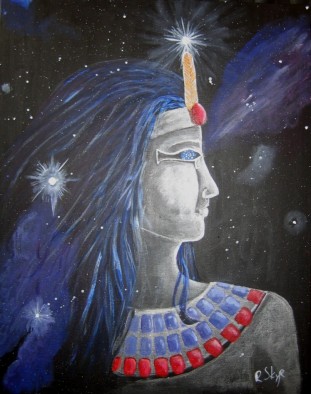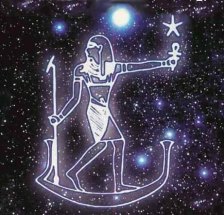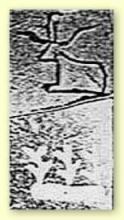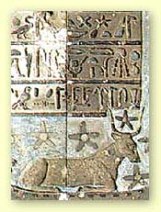“Matariki’s themes are stars, harvest and peace. Her symbols are stars and the number 7. In Polynesian tradition, this Goddess and Her six children became the Pleiades, and they continue to help humans by showing us when to begin harvesting the labors of hand or heart.
From mid- to late November the people of Hawaii take part in special rituals to celebrate the appearance of the Pleiades in the skies, which is the beginning of harvest season. In reverence for this occasion, all war is forbidden. It makes one wish that Matariki and her children appeared around the world all the time!
To encourage similar peacefulness in your own life, and harmony with those around you, carry seven stars in your pocket, wallet, or purse today. You can draw these on paper, use seven typed asterisks, get the marshmallow kind out of a cereal box, or collect seven noodles from a chicken ‘n’ stars can. If you use edible items, eat them at the end of the day to bring serenity to your spirit.
If there’s something you’ve been working on that seems to be taking forever, look to Matariki to show you how to begin effectively manifesting your efforts. Pray, meditate, and watch for unique openings throughout the day, especially after the stars appear in the sky, representing her power.”
(Patricia Telesco, “365 Goddess: a daily guide to the magic and inspiration of the goddess”.)
The only other real mention that I found defining Matariki as a Goddess comes from the Goddess A Day site that states, “To the Maori, the Pleiades are Matariki and her six daughters: Tupu-a-Nuku, Tupu-a-Rangi, Wai-Tii, Wai-Ta, Wai-puna-Rangi, and Uru-Rangi.” [1]
However, the rest of my research found that Matariki wasn’t a Goddess, but is actually the Maori name for the Pleiades. My research also found that Matariki is the traditional Maori New Year that is celebrated anywhere from late May to early June.
“Matariki is the Māori name for the seven-star constellation that rises in the north-east before dawn in late May/early June. In Western astronomy it is known the Pleiades, and it forms the shoulder of Taurus the Bull. Matariki marks the start of a new phase of life. It is a time of festivity for Māori, the tangata whenua, or first people of New Zealand. Matariki is an important time in the Māori calendar and is associated with the start of the cold season when the pātaka kai (food storehouses) are full and the land is at its most unproductive.” [1]
“The Matariki star constellation marked a time for starting all things new, this was a particularly important period for new crops to be planted and the preserving of old crops to be finished. When Matariki was sighted ceremonial offerings of food were planted for the gods Uenuku and Whiro to ensure a good harvest for the coming year. Even the stars themselves were looked upon for guidance as to how successful the coming season would be; the brighter the star constellation the warmer the year was destined and the better the harvest was thought to be.
The timing of Matariki fell at the end of a harvest and food stores were full. Meat, fruits, herbs and vegetables had been gathered and preserved and the migration of certain fish ensured a great period of feasts. Matariki was seen as a time to share with each other, for family and friends to come together and share in the gifts that the land and sea had provided for them.” [2]
Similar to Samhain, “traditionally, Matariki was a time to remember those who had died in the last year. But it was also a happy event – crops had been harvested and seafood and birds had been collected. With plenty of food in the storehouses, Matariki was a time for singing, dancing and feasting.” [3]
Matariki Across the World
“Matariki’s seven stars can be viewed from anywhere in the world and the constellation is globally recognised as a key navigational aid for sailors. It features in many cultures and acts as an important signal for seasonal celebrations around the world.
Europe: Pleiades, the Greek name for the cluster, is described as seven sisters, the daughters of Atlas and Pleone. In Greece, several major temples face straight towards Matariki, as does Stonehenge in England.
Māori and Pacific cultures: In Māori and Pacific stories, Matariki is described as a mother surrounded by Her six daughters.
Japan: In Japan, Matariki is known as Subaru.
Other: The Matariki cluster of stars has also been celebrated by Africans, American Indians, Australian Aborigines, Chinese and Vikings.
Unity, harvesting and planting, paying tributes to ancestors and looking ahead to the future are all themes of these celebrations.” [4]
Sources:
Sabrina. Goddess A Day, “Matariki“.
Taitokerau.co.nz, “Matariki“.
Teara.govt.nz, “Story – Matariki – Māori New Year“.
Wellington.govt.nz, “Matariki – Overview“.
Suggested Links:
Matarikievents.co.nz, “Matariki – Home“.
Ngawhetu.com, “Māori New Year“.
Tetaurawhiri.govt.nz, “Matariki“.
Wikipedia, “Matariki“.





















